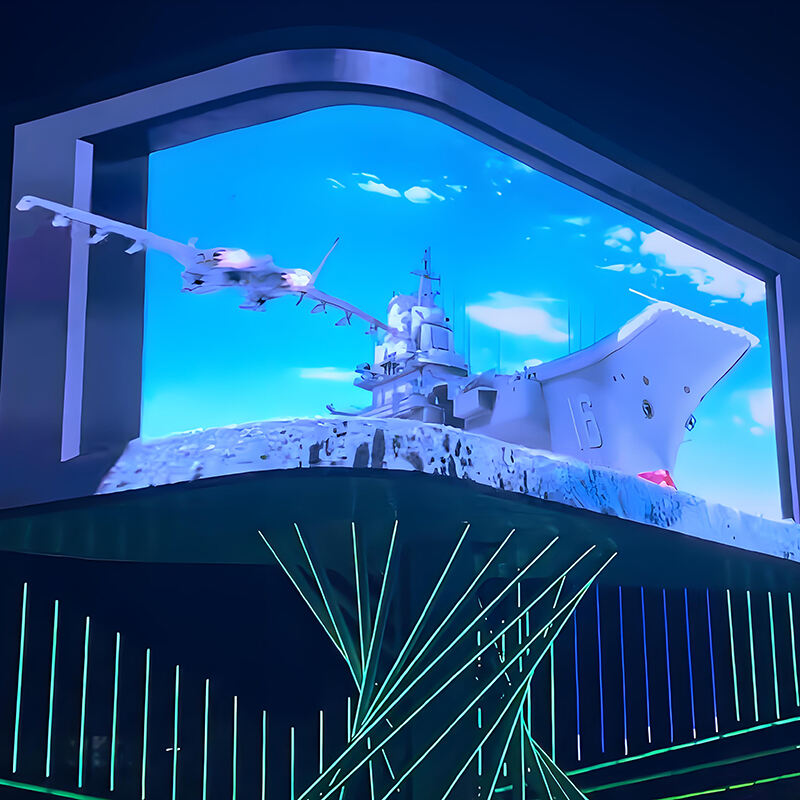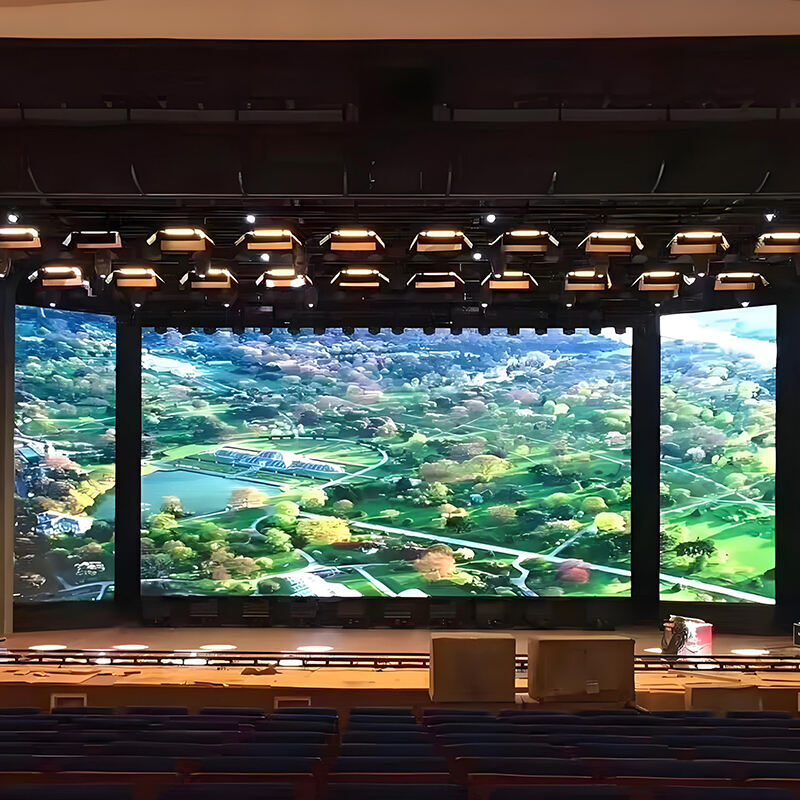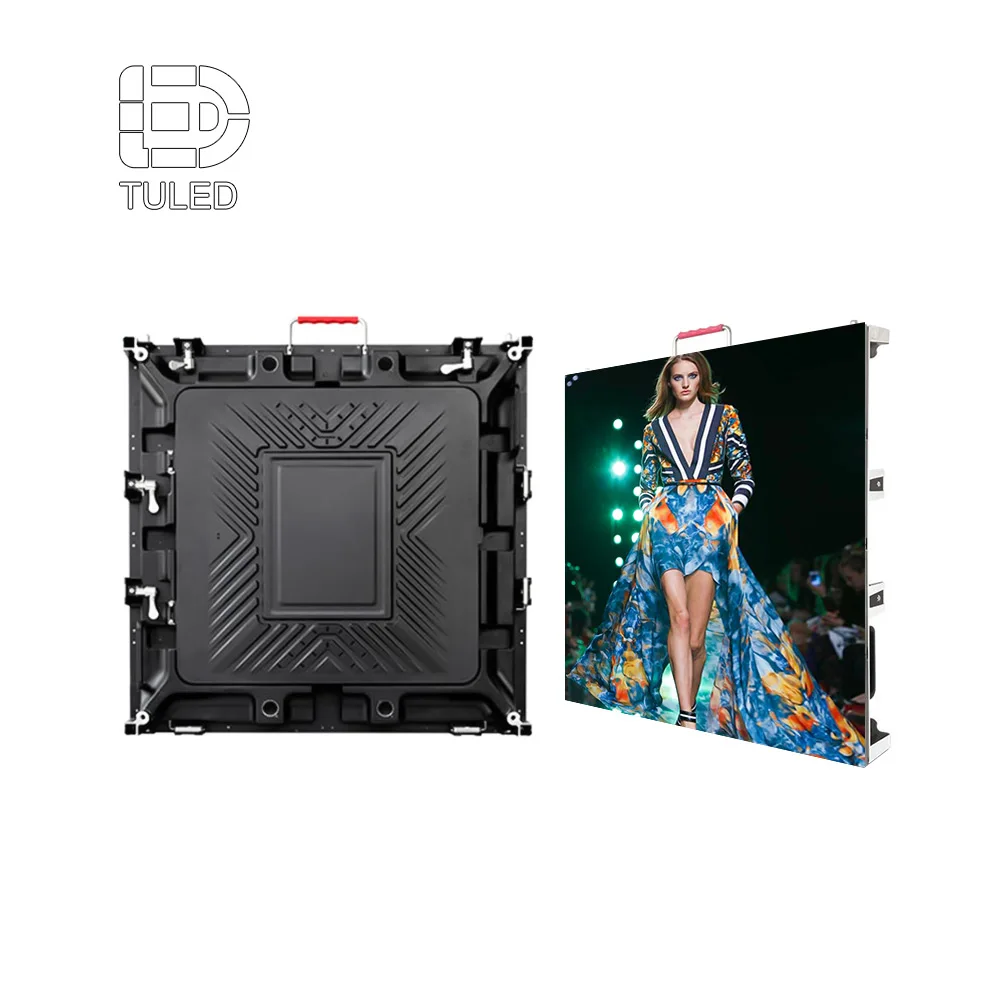Understanding LED Displays: Definition and Core Components
What Defines a LED Display and Its Core Technology
LED displays work using those semiconductor diodes we call Light Emitting Diodes. When electricity flows through them, they actually glow, creating those bright little dots that form whatever image appears on screen. These are different from LCD screens because regular LCDs need that extra backlight behind everything. With LEDs though, each pixel lights up on its own, so there's better control over how bright things look, wider angles for watching from different positions, and really deep black areas in movies or photos. At the heart of this tech are those tiny red, green and blue parts inside each pixel. By adjusting just how much each color shines, manufacturers can mix them together to make literally millions of different colors show up on our screens.
The Role of Light-Emitting Diodes in Display Functionality
An LED functions basically as a tiny light emitter that works through something called electroluminescence. When electrons meet up with those little gaps they leave behind (called electron holes) in the semiconductor material's P-N junction, light gets produced. What makes LEDs so great is their ability to shine brightly even when running on very low voltage power. Some big outdoor screens can actually hit around 2000 nits of brightness. The really smart part comes from these advanced circuit boards that control exactly how much electricity goes to each tiny light. They manage this so well that response times drop below 1 millisecond, and the difference between brightest white and darkest black can be over a million to one ratio. This means we get those sharp, vivid images that look amazing whether watching a movie or scrolling through social media.
Basic Structure: How LEDs Form the Foundation of the Display
LED displays are constructed from modular panels populated with surface-mounted diodes (SMD LEDs) arranged in precise grids. These modules integrate key components:
- Control cards — Process incoming video signals and coordinate display operations
- Driver ICs — Regulate power delivery to each LED cluster for accurate brightness control
- Power supplies — Convert AC power to low-voltage DC for safe, stable performance
Pixel pitch—the distance between adjacent LEDs—determines resolution and ideal viewing distance. Smaller pitches (e.g., 1.5mm) support 8K clarity for close viewing, while larger pitches (10—20mm) are suited for distant viewing in billboards or stadiums.
How LED Display Screens Work: From Pixels to Full Images
Pixel Structure and the Role of Individual LED Diodes
An LED display is made up of individual pixels, and each one actually contains three smaller parts: red, green, and blue (RGB). These tiny components function separately as their own little lights. When electricity flows through them, they produce light at different colors based on their wavelength, which then blend together to create the full range of colors we see on screen. How close those pixels sit next to each other matters a lot too. This distance is called pixel pitch, and when it's really small, the picture gets much sharper. Some top end displays now pack around 10,000 pixels into just one square inch, making images look super clear and detailed.
Color Generation Through Subpixel Arrangement and Control
Getting accurate colors happens when we tweak how bright each red, green and blue subpixel shines. When manufacturers blend different intensity levels across these tiny pixels, modern LED screens can actually show around 16.7 million distinct colors on screen. The driver chips behind all this work really fast too managing changes at rates of about 16 thousand intensity levels every single second. That kind of speed helps create those smooth transitions between shades instead of visible bands or jumps. Because of this level of control, most high end displays now cover roughly 95% of what's called the DCI-P3 color space. For anyone who cares about professional grade visuals like movie makers do, this means their equipment meets the same quality benchmarks found in actual film studios today.
Active vs. Passive Matrix: Driving LED Displays Efficiently
The latest LED screens employ what's called active matrix tech, with those tiny thin-film transistors (TFTs) handling each pixel separately. Compared to older passive matrix setups that work through rows and columns and tend to have annoying crosstalk issues, these newer displays respond much quicker—some can hit under 1 millisecond—and deliver far better contrast. According to DisplayMate research from 2025, this approach cuts down on pixel interference problems by around 82%. That makes all the difference when watching HDR videos or following fast action scenes without seeing artifacts or ghosting effects.
Refresh Rate, Contrast Ratio, and Image Stability Explained
Refresh rates as high as 3840Hz basically wipe out flicker and motion blur problems, so visuals stay smooth even when things are moving fast on screen. The screens also have impressive contrast ratios around 1 million to 1, which means they show all the details whether something is brightly lit or sitting in shadow. For long term use, thermal management keeps everything running consistently without much degradation. Luminance only drifts by under 2% after 10,000 hours of operation time. This kind of stability makes them great choices for places where reliability matters most like outdoor setups or industrial environments where display failure isn't an option.
Key Technical Specifications That Impact LED Display Performance
Resolution, Pixel Pitch, and Clarity: 4K, 8K, and Beyond
The size of pixel pitch really determines how clear and detailed an image will appear on any display. When talking about those fancy 4K and even 8K screens out there, we need to get down to around 1.5mm or smaller if we want those super sharp pictures that broadcast studios and control rooms demand. Take it a step further with something like 0.9mm pitch and suddenly we're looking at displays that work great when people are standing right next to them. That's why these tiny pixels make all the difference in places like retail stores where customers often end up only three meters away from massive digital signage.
Brightness, PPI, and Color Gamut: Measuring Display Quality
The brightness needed for displays changes depending on where they're used. Outdoor screens need to be really bright, often above 5,000 nits just so people can see them when the sun is shining directly on them. Indoors, most panels work fine somewhere between 1,500 and 2,500 nits. When it comes to colors looking right, getting at least 90% coverage of the DCI-P3 color space makes all the difference. This helps images look more natural whether someone is watching a movie or giving a presentation in a boardroom. For those big screen installations we see in stadiums or shopping malls, having high PPI counts matters a lot. Screens with more than 10,000 pixels per inch just look sharper and keep details clearer even from far away distances.
Optimizing Viewing Distance Based on Pixel Pitch and Contrast
Optimal viewing distance can be estimated by multiplying the pixel pitch (in millimeters) by 1,000—for example, a 3mm pitch screen delivers best clarity at around 3 meters. High contrast ratios (5,000:1) improve legibility in bright environments, while finer pitches (≤1.2mm) extend usable visibility in expansive venues like stadiums.
Types and Innovations in LED Display Technology
MicroLED: The Future of Bright, Efficient, and Scalable Displays
MicroLED tech works with tiny light emitting diodes measuring under 100 microns across, which means no backlighting is required at all. These displays can hit brightness levels above 10,000 nits according to Display Daily from last year, making them much better than regular LED screens when viewed outdoors despite using about half the power. The design also allows for modular setups that create huge video walls without visible seams between panels. And here's something really impressive: manufacturers report dead pixels occur less than once every thousand points, so these screens are practically perfect for mission critical environments like control centers or movie theaters where picture quality just cannot have any flaws whatsoever.
Transparent and Flexible LED Displays for Next-Gen Applications
The latest flexible LED panels can actually bend around corners with radii down to just 3mm, making them ideal for those curved installations we see in modern architectural and retail spaces these days. Some versions are completely transparent too, letting through over 70% of ambient light while still displaying digital content right on glass surfaces. Think about those fancy interactive storefront displays or even the augmented reality windshields that car companies have been talking about for years. Speaking of cars, automotive manufacturers are currently working on prototypes for transparent heads-up displays with impressive 10,000:1 contrast ratios. These would project navigation information straight into the driver's line of sight without obstructing their view of the road ahead.
COB (Chip-on-Board) Technology in Modern High-Density LED Panels
COB technology places LED chips straight onto a substrate instead of relying on conventional SMD packaging methods. What does this mean practically? Well, it enables much tighter pixel spacing down to just 0.4mm, makes the displays far more resistant to water damage and physical impacts, and generally stands up better during continuous operation outdoors day after day. Looking at recent industry data from 2024, manufacturers report that COB displays can run for around 200,000 hours before needing replacement, which is quite impressive compared to standard alternatives. Plus, they need about 30% fewer adjustments over time, saving maintenance costs and hassle for operators who manage large outdoor installations.
Applications and Market Trends Shaping the Future of LED Displays
Industrial and Commercial Uses: From Retail Signage to Automotive HUDs
LED screens are changing how businesses and industries look and operate with their bright, moving visuals. Stores put up super bright digital signs to grab shoppers attention, and car companies have started putting clear LED displays right in front of drivers so they can see speed and navigation info without looking away from the road. Stadiums are going all out with giant LED walls that make fans feel part of the action, while cities are installing these screens on street poles that automatically adjust brightness based on time of day for better traffic control. According to market reports from last year, around two thirds of new business setups are choosing those modular LED panels because they can be expanded easily and dont require much upkeep when something breaks down.
Energy Efficiency, Thermal Management, and Sustainability Advantages
LED screens today use around 40% less power than old fashioned LCD displays and they also shine brighter. The technology has come a long way with things like passive cooling systems and special low emission materials that keep them from overheating so much. This actually makes these displays last longer too sometimes well over 100,000 hours of operation. Some research from last year showed that certain types of LED setups called COB configurations cut down on energy usage by another 22% when compared to the older SMD models. As businesses look to cut costs and meet environmental targets, these improvements make LED technology an increasingly attractive option for everything from office buildings to retail spaces across the globe.
Market Outlook: LED vs. OLED and the Rise of MicroLED Technology
Market research suggests that the LED display sector will see growth rates between 8 to 12 percent annually until 2028. This trend seems driven mainly by falling prices for MicroLED manufacturing and those tiny pixel sizes now getting down under 0.7 millimeters. Sure, OLED still rules the living room TV scene thanks to its amazing black levels, but LED technology actually beats it hands down when it comes to maximum brightness output, sometimes triple what OLED can manage, plus it lasts longer outside where weather takes its toll. What really excites tech watchers though is MicroLED's potential. With resolutions pushing past 400 pixels per inch and the ability to scale almost infinitely, these displays are becoming the go-to choice for cutting edge augmented reality headsets and massive 8K screens in stadiums and shopping malls. Some industry experts even think around 30 percent of traditional displays might get replaced by MicroLED within just a few years, though whether that timeline holds remains to be seen.
FAQ
What is an LED display?
An LED display is a screen that uses Light Emitting Diodes to create images. Each tiny diode lights up to form pixels, allowing for bright, high-contrast visuals.
How does pixel pitch affect LED display quality?
Pixel pitch, the distance between adjacent LEDs, affects resolution and viewing distance. Smaller pitches provide sharper images suitable for close viewing.
What makes MicroLED technology superior?
MicroLED technology offers superior brightness without backlighting, modular setups, and high reliability, making it ideal for large-scale and outdoor applications.
How do LED displays contribute to energy efficiency?
LED displays use less power than traditional LCD screens, utilize passive cooling systems, and incorporate low emission materials, enhancing energy efficiency.












